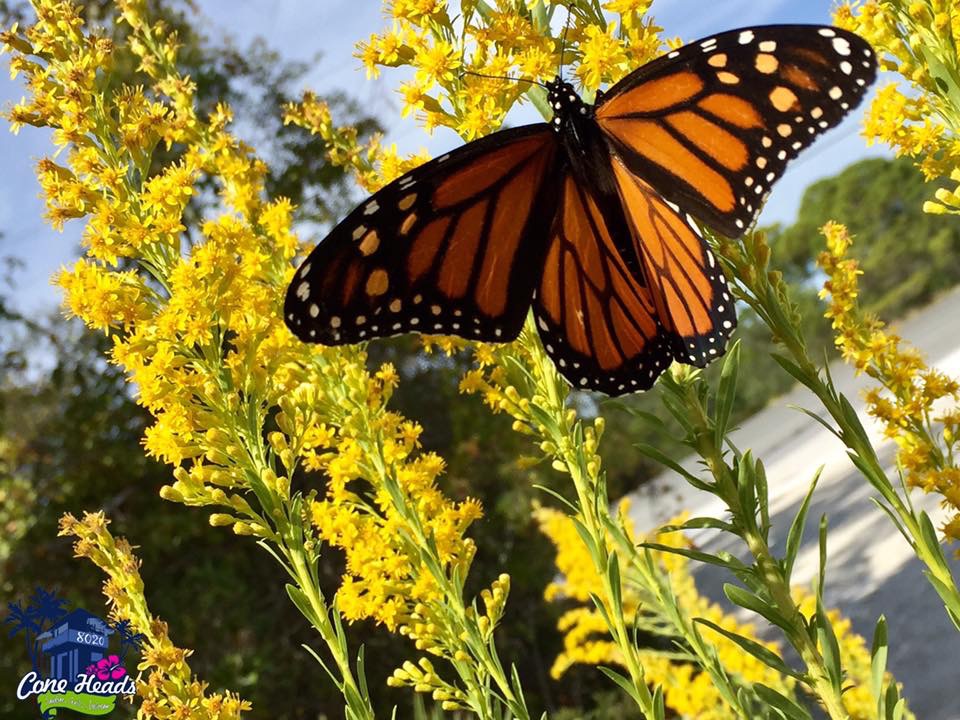The Monarch Butterfly And Its Migration Over Cape San Blas, FL

During the Fall on Cape San Blas, FL, all of a sudden, a rolling wave of stunning orange begins to cover the lush green woods all around covering various flowers, trees and other plants. Monarch butterflies are making their migration straight over Cape San Blas. It is a beautiful sight to see. Yet, just how far do these butterflies fly from and where are they going?
Scores of monarch butterflies migrate from Canada to a certain forest in Mexico—that is a distance of some 1,800 miles! How can they possibly know how to travel such a distance to a particular forest without getting off course over the many days it takes to arrive at their destination? By using the sun.
Though their brains are the size of a ballpoint pen, they have been designed with the capabilities to compensate for the sun’s movement by using a circadian clock. This is a biological function based on a 24-hour day that makes corrections for the sun’s movement.
Their Usefulness
Each year, the millions of monarch butterflies pollinate millions of plants—assisting in the reproduction of an enormous amount of plants.
The Reign of the King of Butterflies May Soon Come to an End
According to researchers, the particular monarch butterfly that takes the incredible migration across North America is undergoing a sharp population decline. What are some of the causes for this sad situation?
Milkweed, Avocados and More
Once the butterflies arrive to their destination in Mexico, they must lay their eggs on a specific plant called milkweed. When the monarch larvae hatch, they feed on milkweed leaves.
However, milkweed plants in the Mexican states of Michoacan and Mexico, where the butterflies finish their migration, are disappearing. The herbicides used on corn and soybean fields are killing the milkweed plants.
Another threat are avocados. Yep, avocados. The livelihood of many people is dependent on avocado plantations. Because avocados are a high demand product, some forests are being replaced by avocado plantations. Which, in certain areas of Mexico, is negatively affecting the monarch because a forest they once descended upon is now gone.
Other factors such as disease, parasites and certain weather conditions that have affected North America in recent years are also hurting the king of butterflies.
What Is Being Done?
The U.S. Fish and Wildlife Service has been asked to place this particular type of monarch on the Endangered Species Act. Others are creating butterfly habitats by planting milkweed.
So, don’t be fooled by its soft, lightweight body—for the monarch butterfly is remarkably resilient and instinctively wise. Let’s hope we do not loss this treasure for good one day.
